A driving tour of the Cotswolds: Chickens, sheep, and dry-stone walls as long as the Great Wall of China
Freda Lewis-Stempel takes to the road to explore one of the most alluring and ancient attributes of the Cotswolds: its 4,000 miles of mellow, dry-stone walls.

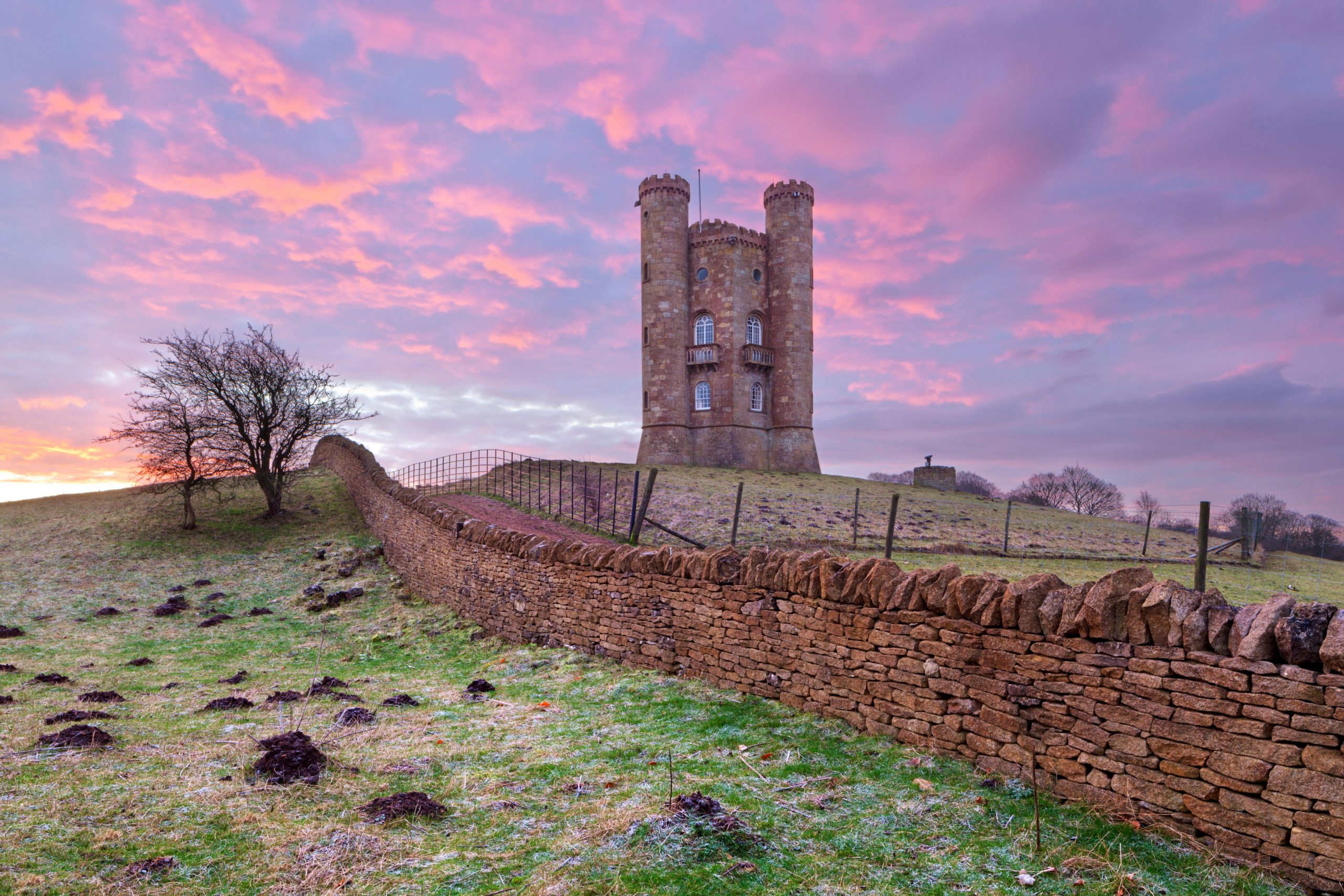
A horse’s tail flicks above the wall of Minchinhampton Common as the car crawls by in the evening sun, the speed restriction of 30mph leaving the evening grazing uninterrupted. My windows are down and, at this quiet pace, the sounds of the sheep and chickens hidden behind the walls of the common escape over the top, as if to emphasise their agricultural necessity.
Driving the Cotswolds is one of the greatest pleasures of the English countryside because, sitting silently in among the hills and towns, the villages and views, a constant source of outstanding beauty is keeping me company: 4,000 miles of dry-stone walls, equivalent to the length of the Great Wall of China. They may date back to the Stone Age, but it was the farmers of the 18th and 19th centuries who used the area’s abundance of natural material to build the walls we see today.
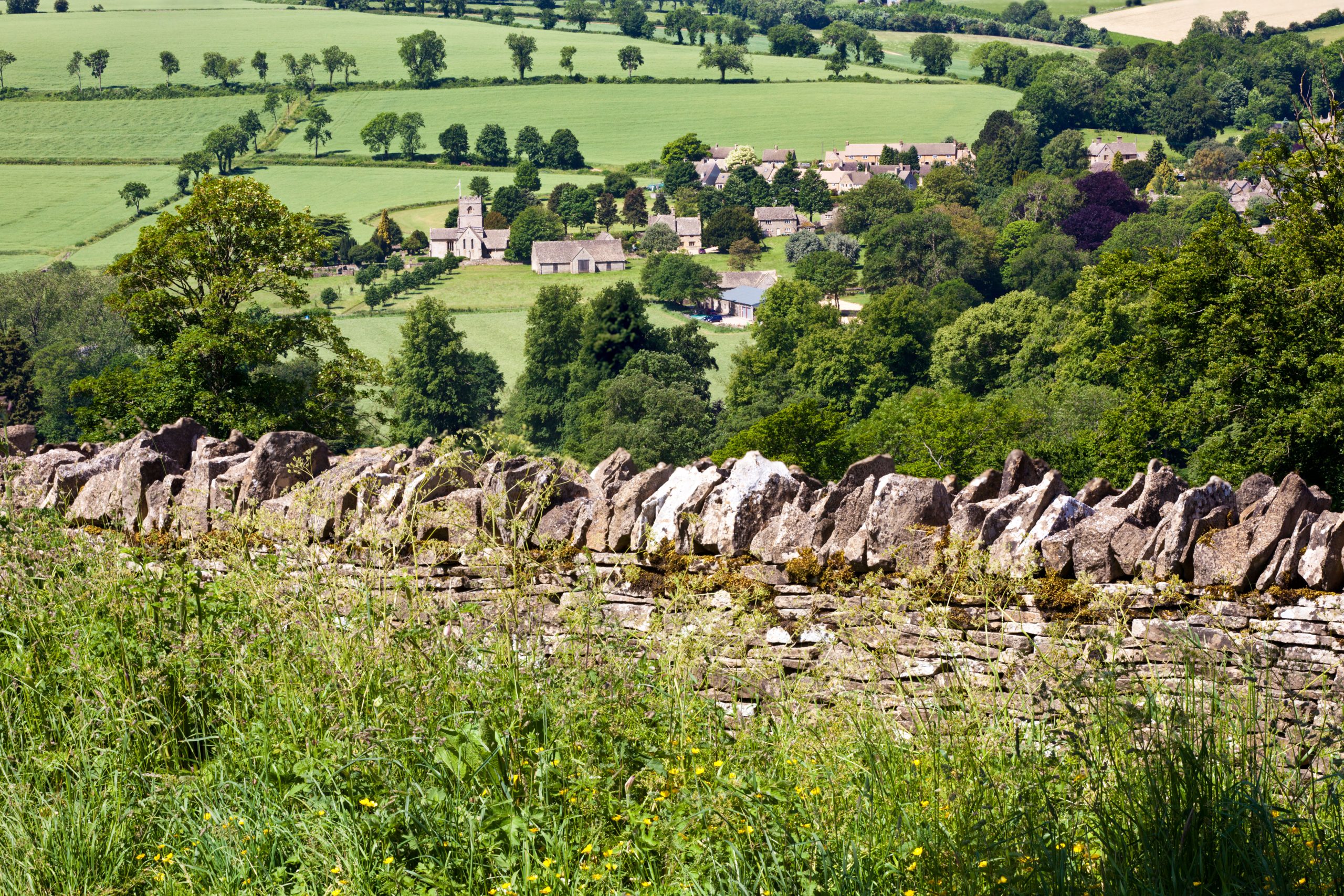
Minchinhampton’s hilltop common sets the scene for the landscape of the high Cotswolds; a quiet town of mellow, blonde stone leading out onto a vast grassland with views over the surrounding valleys. The stone journeys in colour from white gold to dappled ashen brown, some pieces fat and ragged, others inch-thin and sleek to touch. The farm walls on the common are finished in cock-and-hen style, with stones placed vertically on top, whereas garden walls often have flat stone finishes or even smooth cement caps.
Minchinhampton’s church rises across the far side of the common, a far-away continuation of the walls. In the shade of the trees and walls, a donkey is enjoying being petted by a family out for a stroll. As the common widens, traffic jams pile up as cows amble leisurely into the road, crossing to the literally greener grass on the other side. For the animals lucky enough to graze this part, the walls act only as a reassuring presence in the distance, never as a confinement; the barriers are neither tall nor strong enough to stop even the laziest escapee. These walls are the darkest grey of weathered stone.
South of Minchinhampton, the snaking boundaries build in number, signalling the change from deep country to village and town. Hedge and wall are locked in a tug of war beside the road, with the brambles and nettles masking the gradual increase in houses.
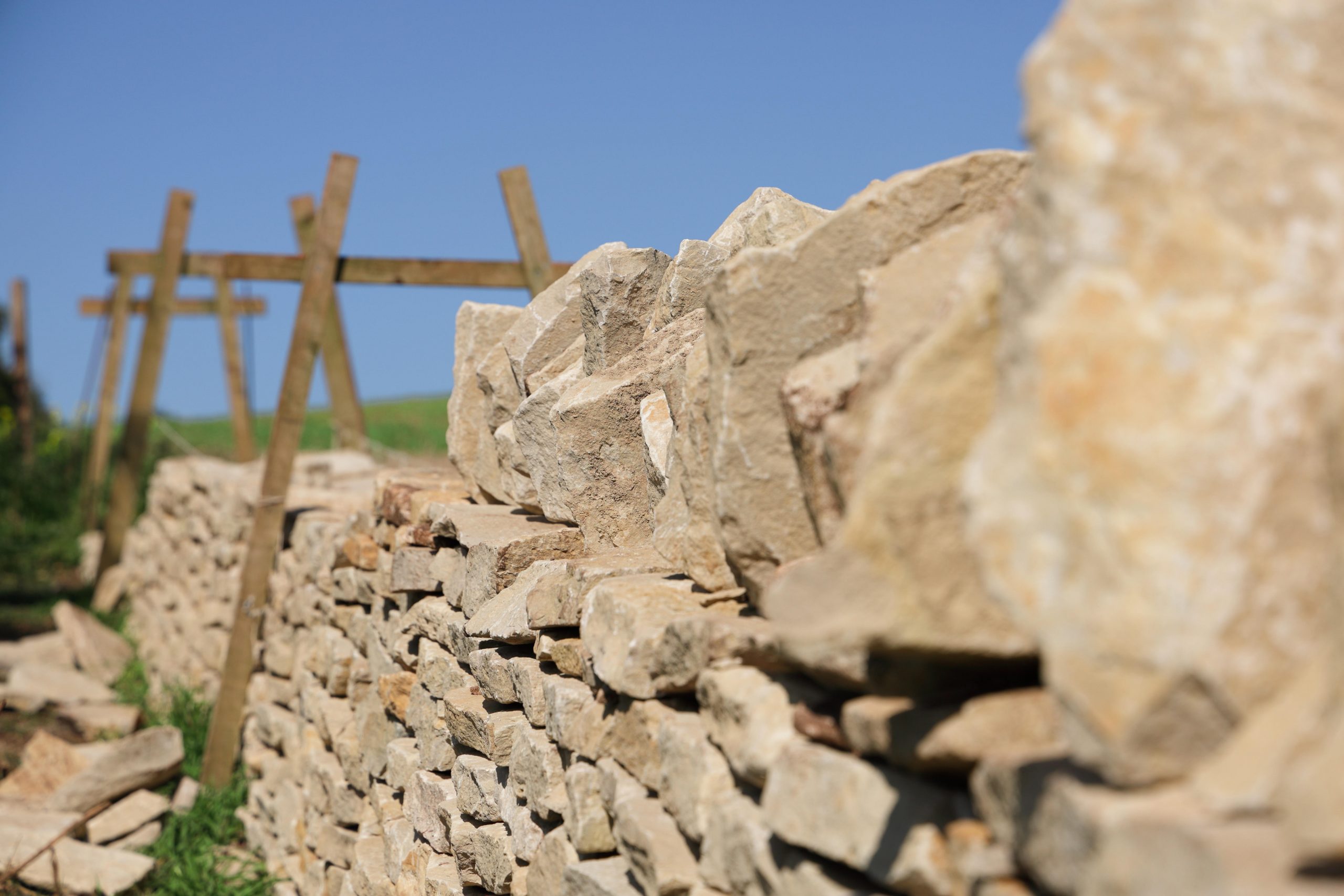
A man is standing on a low garden wall trimming his hedge and, suddenly, the bunting of a high street is criss-crossing above the car roof as a 1655 yellow, pillared market house welcomes me into the thriving wool town of Tetbury. With its merchant houses still looking as they did 300 years ago and its Chipping Steps, where labourers would gather to find work at mop fairs, it has that bemusing perfection that can surely only be found in a town built of honey-coloured Cotswold limestone.
I continue through this Area of Outstanding Natural Beauty, where town and country are linked by the thread of stone wall. No matter the speed when driving past, the light always picks up the newer stones mixed in with the old, a reassuring sign that someone has cared enough to keep this heritage alive.
Exquisite houses, the beauty of Nature, and how to get the most from your life, straight to your inbox.
Thirty minutes from Tetbury, on the road through Tomarton, Nick Tanner, a professional member of the Dry Stone Walling Association, is rebuilding a high garden wall on one of the sprawling Badminton estate farms. He chooses each stone with care. The deep walls narrow from bottom to top in a ‘batter’; smaller stones in the middle of the two outer faces are held together by large ‘bonder’ stones, placed at intervals.
‘I can save about 20% of the stone from a collapsed wall to reuse,’ he notes. ‘I find pieces of history from when the wall was con-structed; bottles, an old field gate gudgeon — you can date the wall from what you find. I always make sure I build them back into the wall to preserve the stories.’ The wildlife living amid the stones adds to the narrative, too. ‘I create spaces in the walls for the newts, frogs and insects to be rehomed.’
Driving on past meandering walls, I silently thank Mr Tanner and his fellow dry-stone wallers for their careful preservation of the Cotswolds’ oldest identifier. From a motoring enthusiast’s perspective, there can be no greater call for such thanks than the stretch of A429 from Cirencester up past Stow-on-the-Wold. This central section of the Fosse Way, the automobile lover’s hero Roman road, is a blinker-lined highway of stone and wood. The walls rise from small to tall, some stones so thin they are almost slate, closely packed like sliced bread. Others, round and rough, are tumbled together and covered by ivy, with just enough rock peeping through to keep the spirit alive.
Letting the walls take me north into Worcestershire, Broadway Tower rises up on its beacon, three Saxon-esque turrets of irrepressible English spirit. Only a matter of steps from the road, the ‘highest little castle in the Cotswolds’ has had many lives.
Built by architect James Wyatt in 1798, for the Earl of Coventry, the tower has housed Sir Thomas Philipps’s printing press, provided a countryside retreat for William Morris and fellow members of the Arts-and-Crafts Movement and done its duty as a First World War Royal Observers Corps look-out point and a Cold War nuclear bunker. As I climb the 65ft edifice on a completely cloudless day, all 16 surrounding counties call out in the distance, their 1,000 farm walls like serpents shedding stone scales behind them as they slither down the valleys.
A few winding miles over the border into Gloucestershire, a tingling perfume fills the car. Just above Snowshill village, lavender fields grow in low rows parallel to the walls, the morning sun lifting a violet calm over the coarse stone as the crickets and bees harmonise in the heat, the salty burning flavour of the limestone attracting the murmuring flies.
Hugged in the arm of the valley, the warmth that built this village sings from the walls of the cottages, the slants of the roofs rising with the slope of the hill. The village is a higgledy-piggledy circle of flower and cottage wall around St Barnabas Church and the Snowshill Arms pub.
A lane of toppling walls and equally broken tarmac captures the eye as an adventurous route to seek the other side of Snowshill. However, 30 minutes later, with no wonderful discoveries and increasingly battered suspension, the walls seem finally to have let me down.
No sooner does this thought gather than the gaps between the trees widen and the ridge opens out to reveal acres of wildflower meadows. A thickness of green nettles and waist-high burnt grass, bushy purple thistles sowed with gingham-blue millet and royal-red poppies stretches towards the heaped furrows of straw-cut fields below.
On a whim, I turn left, the wandering walls and overgrown verges taking me deeper into the lowland afternoon stillness. Across the flat fields, a doll’s mansion rises up — a perfect symmetry of neo-Classical architecture meeting buttery Cotswold limestone. This is Lodge Park Grandstand, part of the Sherborne estate, built by Sir John ‘Crump’ Dutton in the 1630s for the pleasure of family and friends, who gambled away their cares watching deer-coursing down the mile-long dry-stone-walled track. For guests lucky enough to be invited, this 40mph race would be the fastest thing they would see in their lives.
Leaning over the roof balustrade, the stone still chatters with the yells and babbles of a time past, when a man could look at the local agricultural barriers beyond which his cattle safely grazed and have the imagination to turn those stones into a sporting haven.
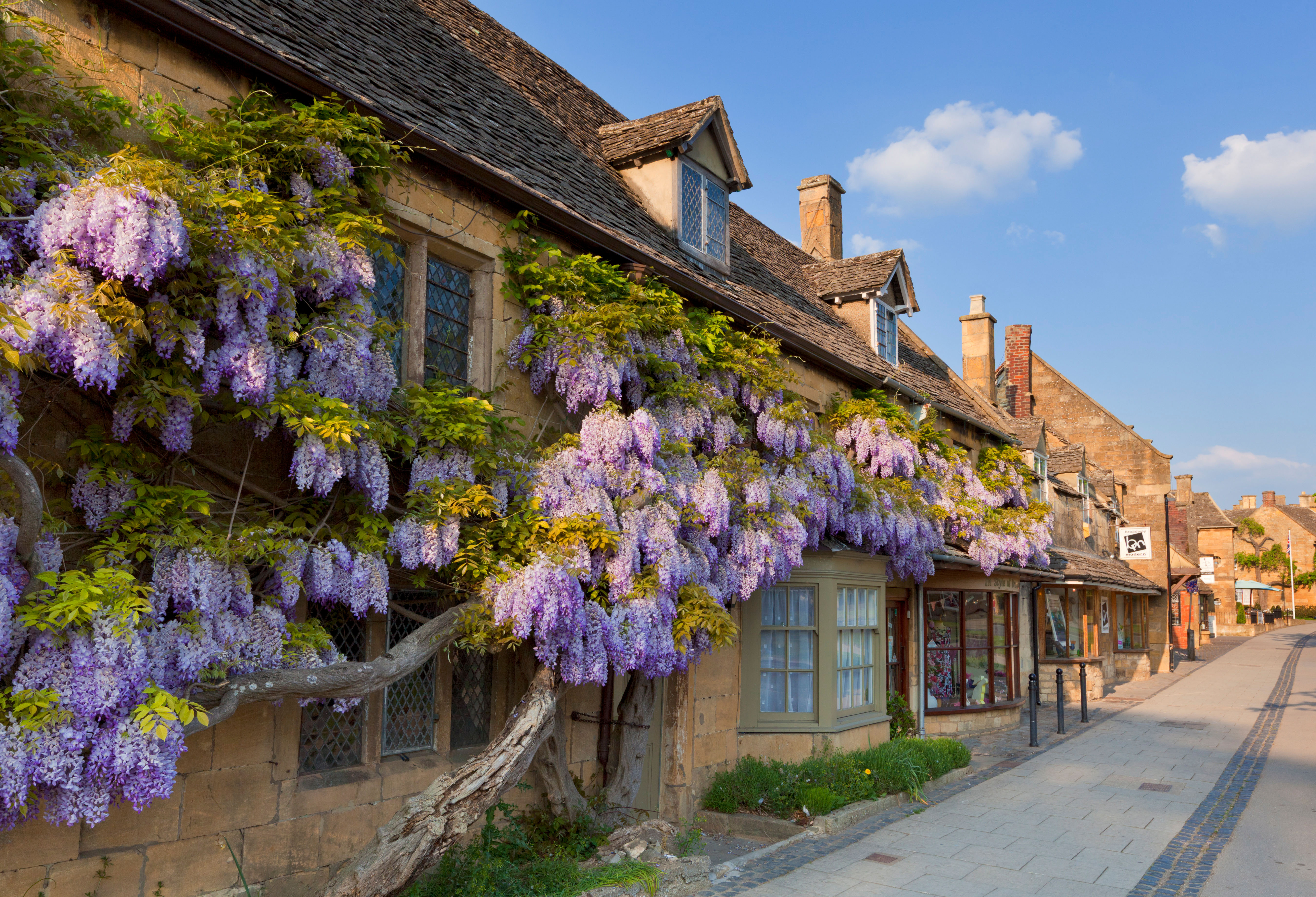
Where to live in the Cotswolds: A guide to choosing the perfect spot
Where in the Cotswolds should you move to? The answer will depend on what is more important to you and

The Royal Crescent Hotel review: 'A dreamy place of peace and quiet'
Where period charm meets contemporary living.

'There are some things that never will be reproduced if the world lives a million years': What it was like to be alive at the end of the First World War
They cheered, they cried, they laughed, they danced in the streets. Almost 100 years to the day since it was
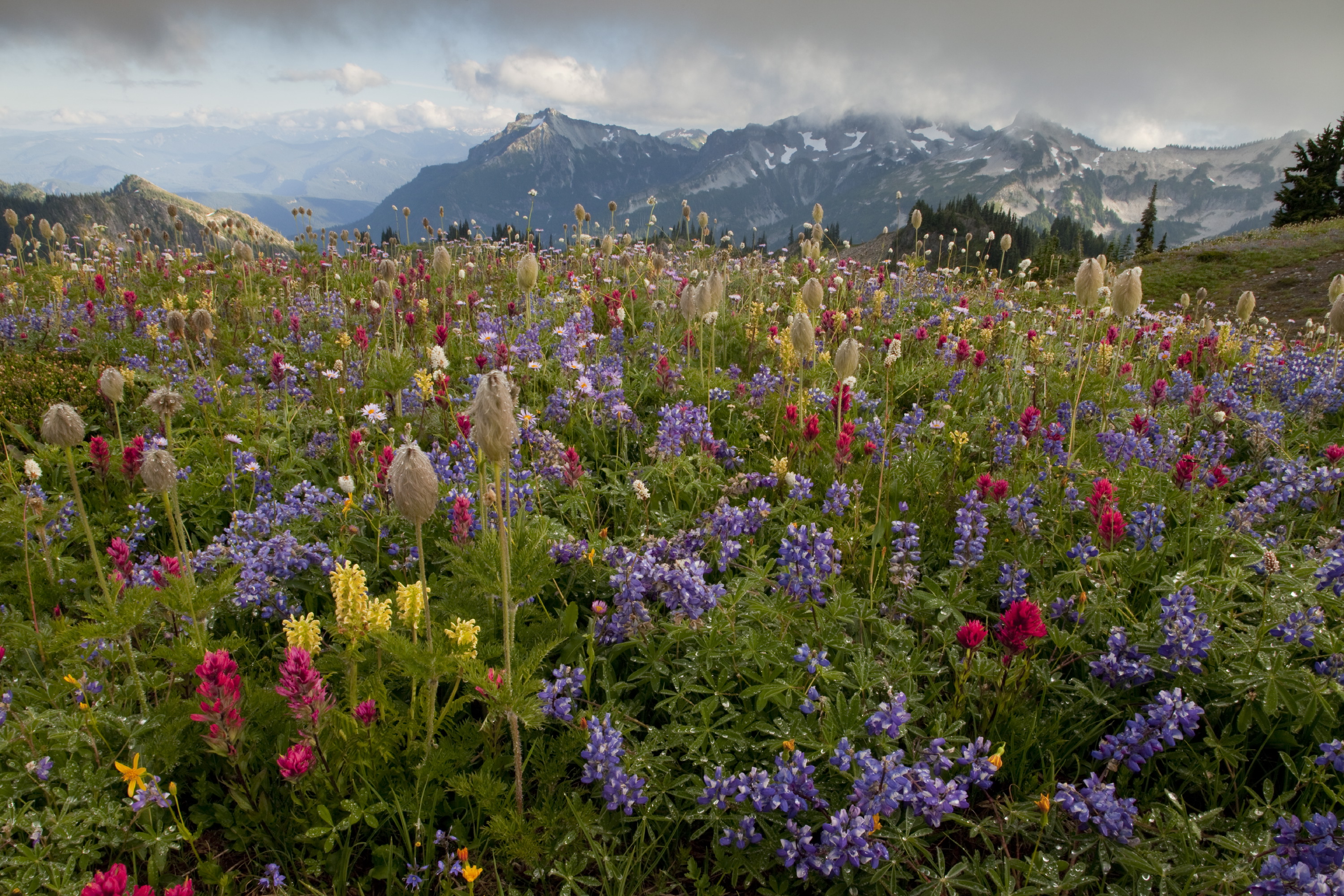
The world's greatest wildflowers: Where to find them and why they bring us so much joy
Lady’s slippers by the hundreds if not thousands, hillsides golden with daisies, swards of salvias: Sarah Raven salutes Bob Gibbons,
Country Life is unlike any other magazine: the only glossy weekly on the newsstand and the only magazine that has been guest-edited by His Majesty The King not once, but twice. It is a celebration of modern rural life and all its diverse joys and pleasures — that was first published in Queen Victoria's Diamond Jubilee year. Our eclectic mixture of witty and informative content — from the most up-to-date property news and commentary and a coveted glimpse inside some of the UK's best houses and gardens, to gardening, the arts and interior design, written by experts in their field — still cannot be found in print or online, anywhere else.
